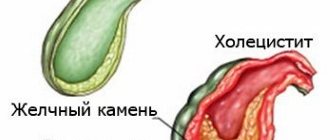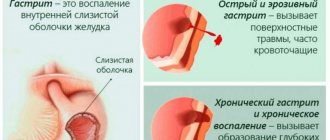Diarrhea is a dysfunction of the intestines, which is manifested by cramping abdominal pain and loose stools. Diarrhea after chemotherapy occurs primarily due to the toxic effects of the chemotherapy drug on the epithelial cells of the large and small intestines. Most modern chemotherapy drugs cause intestinal dysfunction. The patient cannot always cope with this situation on his own. Oncologists at the Yusupov Hospital are involved in replacing lost fluid and electrolytes. The hospital uses innovative treatment regimens in accordance with international standards.
Why does diarrhea develop after chemotherapy?
There are two known causes of diarrhea during chemotherapy: the toxic effects of cytostatics and leukopenia. When using cytostatic drugs, diarrhea develops in 10-70% of cases. Drugs used in chemotherapy destroy uncontrollably dividing tumor cells, but indirectly damage healthy cells, primarily red bone marrow and the epithelium of the digestive tract. Ulcers form in the intestines, as a result of which the absorption of nutrients is disrupted and the movement of intestinal contents accelerates.
In the presence of leukopenia, infectious complications are often associated, including intestinal infections. They are manifested by vomiting, diarrhea and increased body temperature.
Diarrhea
Inflammatory bowel diseases (IBD): These are a series of autoimmune diseases that lead to inflammation of the digestive tract (Crohn's disease) or just the colon in the case of ulcerative colitis.
Bowel cancer : Diarrhea is a common symptom, but it is always worth considering long-term changes in bowel function lasting more than two or three months.
Celiac disease : This is an autoimmune disease in which gluten, a protein found in wheat, barley or rye, causes damage to the lining of the small intestine. This results in food not being absorbed into the body and, in some cases, diarrhea.
Microscopic colitis : This is an inflammatory bowel disease that cannot be seen when examining the intestinal wall with a camera (endoscopy). To make an accurate diagnosis, it is necessary to conduct a histological examination of pieces (biopsy samples) of the colon mucosa. It is characterized by watery diarrhea lasting more than 4 weeks, which is usually accompanied by urges and problems with bowel movements.
Bile acid malabsorption (BAM): This is a disorder in the distribution of bile acids in the body. Bile acids produced by the liver enter the small intestine and help absorb fats from food. When fatty acids enter the colon in excess, their absorption slows down and the secretory process of water and electrolytes is stimulated, which causes secretory diarrhea.
Exocrine pancreatic insufficiency (EPI): The pancreas has two functions, one of which is to produce digestive enzymes that help digest the food we eat. Problems with the pancreas can reduce its ability to produce these enzymes. This can lead to malabsorption of fats and diarrhea.
Pelvic radiation disease : Radiation therapy for pelvic cancers can cause damage to the digestive tract, leading to diarrhea in some people.
Surgery : Any removal of large parts of the digestive tract can lead to diarrhea, and sometimes it can also cause dumping syndrome. It usually forms after surgery on the digestive tract, in particular after removal of the stomach, when food moves too quickly from the stomach to the intestines without proper digestion, irritating the mucous membrane of the small intestine, causing hypersecretion of fluid into the intestinal lumen and the release of biologically active substances: histamine, serotonin, bradykinin, which leads to diarrhea.
There are other causes of diarrhea, but they are generally much less common.
How to treat diarrhea after chemotherapy?
When diarrhea develops after chemotherapy, how is it treated? Treatment of diarrhea after chemotherapy should be comprehensive. Combination therapy includes:
- probitotics (Probifor or Enterol, Bifidum bacterin Forte) – restore normal intestinal microflora and displace pathogenic microorganisms from its lumen;
- loperamide - slows down intestinal motility and reduces the secretion of fluid into its lumen;
- enterosorbents (Enterosgel or Smecta) remove toxins from the intestinal lumen (after chemotherapy, taking activated carbon is strictly contraindicated);
- pancreatic enzymes (Creon 25000) improve food digestion.
- solutions: Ringer's solution
Diarrhea in therapeutic practice
Diarrhea is the excretion of unusually thin and watery feces, usually at least 3 times within 24 hours. However, in this case, it is not the frequency of stools that is of particular importance, but its consistency. Frequent excretion of formed feces does not indicate the presence of diarrhea [4].
Risk factors
Globally, some 780 million people lack access to good drinking water and 2.5 billion people lack basic sanitation. Diarrhea caused by infection is common in developing countries. Among residents of Europe and North America, traveler's diarrhea is the main risk factor for acute diarrhea. For Europeans it is 34–50%, including in the first 2 weeks. trips - 26–38% [5]. Tourists visiting Central (29.6%) and Western (21.5%) Africa and the Indian subcontinent (26.3%) are at greatest risk. In most cases, the travel period is from 1 to 8 weeks. 1 case of travelers' diarrhea develops (37.0–69.8%), but 13.0–30.2% of travelers report 2 or more episodes of diarrhea. The average duration of the disease, as a rule, does not exceed 2 days, but can reach up to 90 days [6, 7]. This pathology is facilitated by frequent travel of people, childhood (less than 10 years), and consumption of water and food in violation of sanitary and hygienic standards. For non-infectious diarrhea, risk factors are associated with underlying diseases.
Etiology and pathogenesis
The main causes of acute diarrhea are infection and malnutrition. Acute diarrhea is also associated with the consumption of food (seafood) stored in unhygienic conditions or contaminated during irrigation. Less commonly, it is caused by the consumption of foods or water containing an excessive concentration of copper salts, ethylene glycol, benzene derivatives, acute forms of ulcerative colitis, Crohn's disease, radiation damage to the intestines and iatrogenics (taking medications, surgical interventions). The occurrence of acute diarrhea is also possible in persons predisposed to food allergies when consuming the corresponding products.
Infectious diarrhea is caused by a wide range of bacteria, viruses and parasites, most of which are spread through fecal-contaminated water. Infections are most common where there is a lack of clean water for drinking, cooking and personal hygiene. In developing countries, intestinal bacteria and parasites are more common causes of diarrhea than viruses, especially during the summer months. In developing countries, any form of Escherichia (E.) coli causes disease in children, while in developed countries, the most common cause of diarrhea is enterohemorrhagic E. coli (EHEC, including E. coli 0157:H7) [8]. Campylobacter is prevalent in adults and is one of the most commonly isolated bacteria from feces in neonates and children in developing countries. In industrialized countries, the cause of acute diarrhea is mainly viruses, with a clear predominance in winter (Table 1).
Diarrhea due to malnutrition is especially common in children. Each case of diarrhea in turn worsens their malnutrition. In this regard, it is one of the leading causes of death among children under 5 years of age.
The mechanism of development of infectious diarrhea of a bacterial nature, as a rule, includes the production of an enterotoxin (Vibrio cholera, enterotoxin-forming E. coli, clostridia), which increases the activity of adenylate cyclase. This leads to the accumulation of cyclic adenosine monophosphate inside the intestinal epithelial cells. The latter stimulates the secretion of water and electrolytes by enterocytes. Another mechanism of diarrhea is associated with direct damage to the epithelial cells of the intestinal mucosa by infectious agents (viruses, protozoa, Shigella, enteroinvasive strains of Escherichia coli, salmonella). Chronic diarrhea is often non-infectious in nature.
The pathogenesis of diarrhea is realized through 4 mechanisms:
- disturbance of intestinal secretion;
- increased osmotic pressure in the intestinal cavity;
- violation of the transit of intestinal contents;
- increased intestinal exudation.
The predominance of one or another mechanism determines the nature of diarrhea. There are exudative, osmotic, secretory and motor diarrhea.
The causes of exudative diarrhea are bacterial (enterotoxins Shigella, Salmonella, Clostridium difficile, Cryptosporidium, Campylobacter, Neisseria gonorrhoeae, Yersinia, Entamoeba histolytica, Lamblia intestinalis, Strongyloides stercoralis), inflammatory (ulcerative colitis, Crohn's disease, ischemic colitis, radiation colitis, microscopic colitis , diverticulitis), malignant (intestinal neoplasms) and ischemic intestinal diseases. Exudative diarrhea is accompanied by damage to the epithelium, the formation of ulcers, and crypt abscesses. With exudative diarrhea, the stool is liquid, often mixed with blood and pus.
Osmotic diarrhea is characteristic of diseases caused by a defect in intestinal enzymes (primary, secondary fermentopathy: lactase deficiency, celiac disease), functional failure of the stomach, pancreas, liver and biliary system. It occurs with anatomical damage to the intestine: post-resection and vascular diseases of the digestive tract, immune diseases, drug damage (drug malabsorption caused by taking mannitol, sorbitol, lactulose, pectins, anthraquinones, antimetabolites, cytostatics, bile acids). With osmotic diarrhea, there is an accumulation in the intestinal lumen of non-absorbable osmotically active soluble carbohydrates that undergo bacterial fermentation with the formation of volatile fatty and lactic acids. With osmotic diarrhea, the stool is profuse (polyfecalia) and may contain a large amount of semi-digested food residues (steatorrhea, creatorrhoea).
Secretory diarrhea is caused by the action of toxins (enterotoxins Vibrio cholerae, Escherichia coli, Bacillus cereus), various viruses (adenoviruses, coronaviruses, etc.), apudoms (Vipoma, Werner-Morrison syndrome, Zollinger-Ellison syndrome, serotoninoma, somatostatinoma, etc.). Secretory diarrhea is associated with drug-induced diarrhea due to the use of laxatives (bisacodyl, lactulose, phenolphthalein, castor oil). Its pathogenesis is associated with pathological secretion of fluid into the intestine due to excessive secretion of Cl-, malabsorption of Na+, K+. With secretory diarrhea, the stool is painless, copious, watery (more than 1 liter).
Motor diarrhea is a characteristic symptom of:
- endocrine pathology (hyperthyroidism, medullary thyroid cancer, thyroid C-cell adenoma, carcinoid syndrome);
- visceral neuropathy (vagotomy, sympathectomy, diabetic neuropathy, amyloid neuropathy, scleroderma);
- diseases of the brain and spinal cord (tumor, syringomyelia, amyotrophic lateral sclerosis, tabes dorsalis);
- anatomical damage associated with diseases or operations on the gastrointestinal tract;
- functional diseases (dumping syndrome, short bowel syndrome, irritable bowel syndrome, systemic sclerosis);
- drug effects when taking antacids containing MgSO4, PO42-, cholinomimetic drugs. With motor diarrhea, the stool is moderate, the volume of feces can reach up to 500 ml/day with the presence of undigested residues.
Classification
According to ICD-10 there are: A09. Diarrhea and gastroenteritis presumably of infectious origin; K52.9. Non-infectious gastroenteritis and colitis, unspecified.
Diarrhea is divided into acute (less than 2 weeks), persistent (2 to 4 weeks) and chronic (more than 4 weeks). In all cases, diarrhea is most often not an independent disease, but a symptom of another pathology, characterized as a nosological form.
It is customary to distinguish 4 clinical forms of diarrhea, each of which reflects the underlying pathology and altered physiological state [9]:
- acute watery diarrhea (including cholera) lasting several hours or days: the main danger is dehydration; weight loss is also noted if feeding is stopped;
- acute bloody diarrhea, called dysentery: the main danger is associated with damage to the intestinal mucosa, sepsis and malnutrition; Other possible complications include dehydration;
- refractory diarrhea lasting 14 days or more: the main dangers are malnutrition and severe infection without gastrointestinal involvement; cases of dehydration cannot be excluded;
- diarrhea due to severe malnutrition (cachexia or kwashiorkor): the main danger is associated with severe systemic infection, dehydration, heart failure, and vitamin and mineral deficiencies.
Approximate formulation of diagnosis
- Rotavirus gastroenteritis, severe course. Hypovolemic shock II degree.
- Irritable bowel syndrome with diarrhea.
- Postcholecystectomy syndrome. Cholecystectomy (in 2010). Hologenic diarrhea.
- Biliary dyskinesia. Hologenic diarrhea.
Clinic and diagnostics
Characteristics of the frequency of bowel movements, the volume and appearance of feces, the presence and degree of dehydration, and symptoms accompanying diarrhea allow us to assume the presence of a particular disease in each specific case, taking into account a significant number of different reasons. Thus, in most patients with diarrhea, the diagnosis can be established on the basis of complaints, anamnesis, physical examination, proctological examination, macro- and microscopic examination of stool (Table 2).
Diagnosis of the disease that caused diarrhea begins with a careful collection of complaints and anamnesis of the disease. In this case, the doctor must receive the following information:
- frequency of bowel movements and volume of stool over 1 day,
- the presence of tenesmus and defecation at night,
- association of diarrhea with abdominal pain or flatulence,
- the presence of pathological impurities in the stool,
- presence of weight loss.
A thorough assessment of the clinical picture of the disease helps to distinguish between enteral and colitic diarrhea (Table 3).
Features of diagnosis for various types of diarrhea
There are 3 degrees of dehydration:
- Early dehydration - has no signs or symptoms.
- Moderate dehydration: thirst;
- restless behavior and irritability;
- decreased skin elasticity;
- sunken eyes.
- symptoms become more severe;
Features of the diagnosis of osmotic diarrhea. Osmotic diarrhea is accompanied by the release of a large volume of watery stool, usually without pathological impurities. The causes of osmotic diarrhea are the intake of poorly absorbed cations (for example, magnesium), anions (for example, sulfate), high-atomic alcohols (for example, sorbitol) and insufficient absorption of carbohydrates (for example, lactose in lactase deficiency). For the diagnosis of osmotic diarrhea, the determination of stool pH is essential, which, as a rule, changes.
Features of the diagnosis of secretory diarrhea. The examination of a patient with secretory diarrhea is significantly delayed, since this type of diarrhea is caused by many reasons. Infection (a rare cause) is excluded by culture and microscopy of stool for helminth eggs. Abuse of laxatives that increase intestinal motility is excluded by examining their content in urine and feces. Anatomical defects and internal intestinal fistulas are detected by radiography of the small intestine and computed tomography of the abdomen and pelvis. Sometimes the determining factor in making a diagnosis is performing endoscopy of the upper gastrointestinal tract with taking a biopsy from the distal duodenum or jejunum (celiac disease, giardiasis, Whipple's disease). If these causes of secretory diarrhea are excluded, a study of the immune system (immunodeficiency) and diagnosis of hyperthyroidism and adrenal insufficiency are performed.
In terms of diagnosing diarrhea with fatty feces, determining the insufficiency of the excretory function of the pancreas is important. Significant clinical improvement while taking pancreatic enzymes allows a definitive diagnosis to be made. Impaired absorption of bile acids is often accompanied by secretory diarrhea, and in rare cases, fatty diarrhea. In this case, determination of a high content of bile acids in the stool confirms the diagnosis. Excessive growth of bacteria is excluded through bacteriological analysis of stool. To confirm the diagnosis, for example, celiac disease, Whipple's disease, a biopsy of the small intestine can be used, followed by its morphological examination.
Taking into account the possible range of diseases that can be accompanied by inflammatory diarrhea, the basic methods for diagnosing them are sigmoidoscopy and colonoscopy with visual assessment of the colon, its biopsy and morphological examination. To diagnose the causes of inflammatory diarrhea, computed tomography, radiography of the small intestine, and bacteriological examination of stool are also used.
The cause of diarrhea cannot be determined in 25% of cases, even with an in-depth examination of the patient. Nevertheless, the doctor should know that the course of idiopathic secretory diarrhea is generally favorable. As a rule, diarrhea begins suddenly, is initially accompanied by a decrease in body weight, is cured within 1–2 years and does not recur. It is recommended to treat such patients symptomatically rather than repeat examinations.
Differential diagnosis
In a clinical setting, differential diagnosis begins with the clinic, anamnesis and stool characteristics according to the Bristol scale, which makes it possible to verify the nature of the stool. Laboratory testing of stool consistency complements the diagnosis, but its results are delayed. The presence of acute diarrhea with signs of intoxication is most likely associated with an infectious factor. Chronic diarrhea is much less due to infection. Its temporal characteristics make it possible with a fairly high probability to exclude the infectious nature of diarrhea after 1 month, but does not make it possible to determine at an earlier time the participation of this factor in the genesis of diarrheal syndrome.
In addition to the classification of diarrhea by duration, the pathophysiology and characteristics of the stool (watery, greasy, or with signs of inflammation) are of particular importance in making the diagnosis. In this regard, a careful review of the medical history remains an important part of the evaluation of a patient with diarrhea. Instrumental research methods (x-ray and endoscopic with biopsy of the small and large intestines) are key in the diagnostic search for the cause of diarrhea. In recent years, diagnosis of the cause of diarrhea has improved with the use of endomicroscopy and molecular research methods. Of particular importance is the study of the role of intestinal microflora in the formation of a particular pathology [11]. Serological tests have a well-defined role in the diagnosis of celiac disease, but less so in the verification of autoimmune and inflammatory bowel diseases. Quantitative determination of peptide hormones in the blood and intestinal tissue makes it possible to diagnose apudoms with a high degree of probability, but cannot be used as a screening test. Breath tests to assess carbohydrate absorption, small intestinal bacterial dysbiosis, and intestinal transit disorders have limited technical capabilities that reduce their sensitivity and specificity. Similarly, the methods used to assess bile acid absorption have limited information content.
Indications for hospitalization:
- signs of dehydration;
- change in mental status;
- young age (<6 months or <8 kg weight);
- history of premature birth, chronic or concomitant diseases;
- fever >38ºС in newborns up to 3 months. or >39ºС in children aged 3–36 months;
- visible blood in the stool;
- diarrhea with high stool frequency, including large volumes of stool;
- persistent vomiting, severe dehydration, persistent fever;
- suboptimal response to oral rehydration therapy or inability to administer it;
- no improvement within 48 hours (increased symptoms);
- general deterioration of condition.
Tactics for managing a patient with acute diarrhea
Treatment objectives:
- prevention of dehydration if there are no signs of it;
- treatment of dehydration if present;
- prevention of nutritional disorders by feeding during and after diarrhea;
- reducing the duration and severity of diarrhea and the frequency of future episodes by fortifying the diet with zinc [9].
The nutrition of a patient with diarrhea should be appropriate for his age, regardless of the intake of fluid included in oral rehydration solutions or used for maintenance purposes. Newborns require more frequent breastfeeding or formula feeding. There is no need to use special solutions. Older children should receive a correspondingly larger amount of fluid. It is recommended to eat small, frequent meals - 6 times a day. Food should be as energy-dense as possible and contain a sufficient amount of microelements (grains, meat, fruits and vegetables). Increased intake of energy-rich foods is achieved after an episode of diarrhea. Adding zinc sulfate to treatment (2 mg/day for 10–14 days) reduces the frequency of diarrhea by 2–3 months. and helps reduce mortality rates among children with persistent diarrhea. This method of adjunctive therapy is recommended by WHO [12]. All children with persistent diarrhea should also receive a supplemental multivitamin and mineral daily for 2 weeks. Therapy includes at least two daily supplements of folate, vitamin A, zinc, magnesium and copper (WHO, 2005).
Patients with diarrhea should receive probiotics containing Lactobacillus GG (ATCC 53103), which has demonstrated efficacy in humans. Controlled clinical intervention studies and meta-analyses support the use of specific probiotic strains and products in the treatment and prevention of rotavirus infection in newborns. However, all their effects are strain-dependent and require confirmation of the effectiveness of each strain in clinical studies. Extrapolation of results from even closely related strains is impossible; there are reports of completely different effects of use. It is known that Lactobacillus can induce an immune response [13, 14]. Lactobacilli have a protective effect by regulating the activity of chemokine and cytokine genes [15–17]. In addition, lactobacilli have the property of maintaining the integrity of the cell membrane [17–21].
Cochrane's work evaluating the use of probiotics in the treatment of diarrheal syndrome is noteworthy. 2 authors independently searched PubMed (1966 to 2013) and provided data on the prevalence of Clostridium difficile infection and adverse events associated with antibiotic-associated diarrhea (AAD) and length of hospital stay. Disease outcomes were calculated based on relative risk and corresponded to 95%. For the probiotic group, the authors calculated effects using event rates of 1.5:1, 2:1, 3:1, and 5:1. To eliminate the slightest errors due to the heterogeneity of the groups, an assessment was made of the types of probiotic preparations, their dosage for adults and children, and the risk of systematic error. Overall, the quality of evidence supporting each outcome was assessed using a class of criteria. A total of 1871 studies with 4492 participants were analyzed. A complete analysis of the effectiveness of probiotics in the treatment of AAD was assessed in 4213 patients. The findings indicate that probiotic therapy significantly reduced adverse outcomes by 64% [22].
Multicenter, randomized, single-blind studies were performed in hospitalized children with acute gastroenteritis for 12–72 hours. Children received conventional therapy, with or without probiotics Lactobacillus reuteri DSM 17938 for 5 days. The primary treatment outcome was duration of diarrhea and secondary outcomes (number of hospital days and percentage of children with diarrhea after each day of treatment). In 64 children receiving Lactobacillus reuteri, the duration of diarrhea at 24 hours was significantly reduced (p < 0.001); after 24 and 48 hours, diarrhea stopped in 50% of children receiving the probiotic versus 5% (p <0.001) in the control group. The use of this drug significantly reduced the length of hospitalization (4.31±1.3 days compared with 5.46±1.77, p <0.001) [14].
Cochrane studies indicate that the use of probiotics, containing mainly lacto- and bifid flora, can significantly reduce the likelihood of developing AAD. In this case, the resulting effect is dose-dependent. High doses of probiotics reduce the likelihood of developing AAD by approximately 3 times (8% compared with 22% in the control group of 1474 participants; RR 0.40; 95% CI 0.29–0.55) [16].
These data indicate the important role of probiotics containing lacto- and bifidoflora in the treatment of diarrhea. The most attractive drug in this regard is Linex®. One capsule of the drug contains at least 1.2 × 107 live lyophilized bacteria - Lactobacillus acidophilus and Bifidobacterium infantis, as well as aerobic microorganisms - Enterococcus faecium. The listed types of microorganisms belong to the normal microflora of the gastrointestinal tract. Acidophilic lactobacilli and bifidobacteria produce lactic acid and, in smaller quantities, acetic and propionic acids, thereby reducing the intestinal pH and creating unfavorable conditions for the development of pathogenic and opportunistic bacteria. Bifidobacteria and lactobacilli, being part of the parietal microflora, protect the gastrointestinal tract and prevent the adhesion of pathogenic microorganisms. Enterococcus faecium maintains and regulates the physiological balance of intestinal microflora and the upper intestine. The combination of 3 components: 2 anaerobic microorganisms and 1 aerobic microorganism can significantly increase the effectiveness of the drug [12, 13].
Summarizing the results obtained, we can say that the inclusion of lacto- and bifido-containing probiotics, as well as preparations containing saccharomycetes, in the initial therapy of acute intestinal infection in children suffering from AAD, has a positive effect on the indicators of the quantitative and qualitative composition of the intestinal microflora, contributing to its complete restoration in 12.6% and improvement in 60.5% of patients. Linex® has the greatest clinical and laboratory effectiveness and safety for the viral etiology of acute diarrhea, as well as for widespread gastrointestinal lesions. In case of widespread damage to the gastrointestinal tract, as well as the presumed viral etiology of the disease, the use of the drug Linex® is indicated from the first days of intestinal infection (for a course of at least 2 weeks). The use of the drug significantly reduces recovery time, improves the prognosis and outcome of the disease, reduces the risk and duration of exacerbation of background allergic pathology and the severity of microecological disorders of the intestine [23].
The classic model of treatment for acute diarrhea includes the following elements:
- For mild diarrhea, rehydration can be done at home with oral rehydration salts, which is a mixture of pure water, salt and sugar. This solution is absorbed in the small intestine and replaces water and electrolytes removed from the body in feces. In severe cases of diarrhea (acute dehydration or shock), rehydration is achieved through intravenous fluid administration.
- Zinc supplements reduce the duration of diarrhea by 25% and result in a 30% reduction in stool volume.
- Nutrient-rich foods are prescribed.
- Consult with specialists if the patient has persistent diarrhea, blood in the stool, or if signs of dehydration appear during traditional therapy for diarrhea.
The tactics for managing a patient with chronic diarrhea is determined by the specific nosological form that caused the development of diarrhea.
Treatment
Due to the fact that diarrhea is a manifestation of the underlying disease, nosological diagnosis is required for adequate pathogenetic and etiological treatment. After completing the examination, which may take 1–2 weeks, and determining the final diagnosis, therapy for the underlying disease is carried out.
Etiotropic (specific) therapy involves the prescription of antimicrobial agents. Antibacterial therapy is prescribed for typhoid fever and paratyphoid fever, dysentery, pseudomembranous colitis, severe traveler's diarrhea, campylobacteriosis (severe enterocolitis with bloody diarrhea and sepsis). Antimicrobial therapy is indicated for sexually transmitted intestinal infections (gonococcal proctitis, herpes, syphilis, amebiasis, chlamydial proctitis and lymphogranuloma venereum) (Table 4).
Pathogenetic treatment is carried out for diarrhea caused by hormonally active tumors when their radical removal is impossible, as well as for inflammatory bowel diseases (ulcerative colitis, Crohn's disease). For the treatment of inflammatory bowel diseases, 5-aminosalicylic acid drugs (mesalazine, sulfasalazine), glucocorticosteroid drugs (prednisolone, budesonide), cytostatics (azathioprine, methotrexate, 6-mercaptopurine) and tumor necrotizing factor-α blockers (infliximab) are prescribed. For the treatment of diarrhea associated with overproduction of a number of hormones by hormonally active tumors (gastrinoma, VIPoma, carcinoid syndrome, etc.), the drug of choice is somatostatin - octreotide 50-250 mcg 3 times / day subcutaneously. Currently, radionuclide therapy with octreotide (111In-DTPA-D-Phe1), a combination of octreotide with interferon, is used to treat neuroendocrine tumors (apudomas). For the treatment of malignant apudoms, chemotherapy is prescribed: streptozocin, epirubicin, doxorubicin, chlorosotocin, fluorouracil.
Symptomatic treatment
- Antidiarrheals (opiates - loperamide 2-4 mg 4 times / day, codeine - 15-60 mg 4 times / day, etc.; adsorbents that bind bile acids - cholestyramine 4 g 1-4 times / day for bile acid-induced diarrhea).
- Astringent, enveloping agents (dioctahedral smectite, attapulgite, etc.) to absorb excess amounts of gases, bacterial toxins, bile acids. Astringent, enveloping agents (diosmectite) promote the formation of mucus, reduce the volume of intestinal contents and, as a result, induce the formation of stool in patients with acute and chronic diarrhea.
- Sorbents (hydrolytic lignin 1 tablespoon 3 times a day, colloidal silicon dioxide, etc.) to reduce intoxication.
- Crystalloid oral rehydration solutions for severe diarrhea. If necessary (severe vomiting, inability to swallow), correction of water-electrolyte metabolism is achieved by intravenous infusion of 20 ml of potassium and magnesium aspartate and 10 ml of 10% calcium gluconate solution per 250 ml of 5% glucose solution. To reduce vomiting and dyspeptic disorders, you can use metoclopramide (a dopamine receptor blocker) 10 mg 1-3 times a day.
- Probiotics (Linex® - newborns and children up to 2 years old: 1 capsule 3 times / day; children from 2 to 12 years old: 1-2 capsules 3 times / day; adults and adolescents over 12 years old: 2 capsules 3 r./day).
- Pancreatic enzymes that do not contain bile acids (pancreatin, aspergillus oryzae drug) for diarrhea caused by exocrine pancreatic insufficiency.
The prognosis of diarrhea is determined by the course of the disease that caused its occurrence.
Prevention. Basic measures to prevent diarrhea include the following: access to safe drinking water, improved sanitation, hand washing with soap, and exclusive breastfeeding for the first 6 months. life, proper personal and food hygiene, health education regarding the spread of infections, vaccination against rotavirus infection.
RU1406216222
Literature
- World Health Organization (WHO). World Health statistics 2008 Geneva. WHO, 2008. [Electronic resource] Access mode https://www.who.intwhososwhostat 2008 enindex.html.
- Fischer TK, Viboud C, Parashar U, Malek M, Steiner C, Glass R et al. Hospitalizations and deaths from diarrhea and rotavirus among children <5 years of age in the United States, 1993–2003 // J Infect Dis. 2007. Vol. 195. R. 1117–1125.
- Payne DC, Staat MA, Edwards KM, Szilagyi PG, Gentsch JR, Stockman LJ et al. Active, population-based surveillance for severe rotavirus gastroenteritis in children in the United States // Pediatr. 2008. Vol. 122. R. 1235–1243.
- Treatment of diarrhea. A textbook for doctors and other categories of senior health workers. WHO, 2006.
- Soonawala D., Vlot J., Visser L. Inconvenience due to travelers' diarrhea: a prospective follow-up study // BMC Infect Dis. 2011. Vol. 11. R. 322–332.
- Bandres J., Mathewson J., Ericsson C., Dupont HL Trimethoprim/sulfamethoxazole remains active against enterotoxigenic Escherichia coli and Shigella species in Guadelajara, Mexico // Am J Med Sci. 1992. Vol. 303. R. 289–291.
- Johnson PC, Ericsson CD, Morgan DR, Dupont HL, Cabada FJ Lack of emergence of resistant fecal fluid during successful prophylaxis of traveler's diarrhea norfluoxacin // Antimicrob Agents Chemother. 1986. Vol. 30. R. 671–674.
- Alborzi A., Aelami MH, Astaneh B., Pourabbas B., Farshad S., Kalani M., Nasiri J., Rashidi M. Is Escherichia coli O157:H7 a common pathogen in children with bloody diarrhea in Shiraz, Iran? // Turk J Pediatr. 2008 Jul-Aug. Vol. 50 (4). R. 349–353.
- Diarrhoea Treatment Guidelines (including new recommendations for the use of ORS and zinc supplementation) for Clinic-Based Healthcare Workers. MOST, WHO, UNICEF, IZiNCG. 2005 (https://www.who.int/child-adolescent-health/Emergencies/ Diarrhoea_guidelines.pdf).
- Ivashkin V.T., Sheptulin A.A., Sklyanskaya O.A. Diarrhea syndrome. M.: GEOTAR-Med, 2002. 164 p.
- Schiller LR, Pardi DS, Spiller R., Semrad CE, Surawicz CM, Giannella RA, Krejs GJ, Farthing MJ, Sellin JH Gastro 2013 APDW/WCOG Shanghai working party report: chronic diarrhea: definition, classification, diagnosis // J Gastroenterol Hepatol . 2014 Jan. Vol. 29(1). R. 6–25. doi: 10.1111/jgh.12392.
- WHO. Diarrhea. Newsletter No. 330. Published June 6, 2013.
- Zhou M., Yu H., Yin X., Sabour PM, Chen W., Gong J. Lactobacillus zeae Protects Caenorhabditis elegans from Enterotoxigenic Escherichia coli-Caused Death by Inhibiting Enterotoxin Gene Expression of the Pathogen // PLoS One. 2014 Feb 18. Vol. 9(2):e89004. doi: 10.1371/journal.pone.0089004. eCollection 2014.
- Dinleyici EC, Vandenplas Y. Lactobacillus reuteri DSM 17938 effectively reduces the duration of acute diarrhoea in hospitalized children // Acta Paediatr. 2014 Mar 3. doi: 10.1111/apa.12617. .
- Probiotics for the prevention of Clostridium difficile-associated diarrhea in adults and children / JZ Goldenberg // Cochrane Database of Systematic Reviews, 2013. Iss. 5. Art. No.: CD006095.
- Johnston BC, Goldenberg JZ, Vandvik PO, Sun X., Guyatt GH Probiotics for the prevention of pediatric antibiotic-associated diarrhea // Cochrane Database Syst Rev. 2011 Nov 9. (11): CD004827. doi:10.1002/14651858.CD004827.pub3.
- Usenko D.V., Gorelova E.A. The effectiveness of modern probiotics in the treatment of acute intestinal infections in children with concomitant atopic dermatitis // Infectious diseases. 2013. T. 11. No. 3. P. 27–34.
- Diarrhoea Treatment Guidelines (including new recommendations for the use of ORS and zinc supplementation) for Clinic-Based Healthcare Workers. MOST, WHO, UNICEF, IZiNCG. 2005 (https://www.who.int/child-adolescent-health/Emergencies/Diarrhoea_guidelines.pdf).
- Kornienko E.A., Minina S.N., Fadina S.A., Kalinina S.M., Suvorov A.N. Modern diagnosis and treatment of giardiasis in children // Consilim medicum. Pediatrics (application). 2010. No. 1. P. 18–22.
- Bondarenko V.M., Gracheva N.M., Matsulevich T.V. Intestinal dysbiosis in adults. KMK Scientific Press. M., 2003. P. 220.
- Zhou M., Yu H., Yin X., Sabour PM, Chen W., Gong J. Lactobacillus zeae Protects Caenorhabditis elegans from Enterotoxigenic Escherichia coli-Caused Death by Inhibiting Enterotoxin Gene Expression of the Pathogen // PLoS One. 2014 Feb 18. Vol. 9 (2). e89004. doi: 10.1371/journal.pone.0089004. eCollection 2014.
- Goldenberg J, Ma SS, Saxton JD, Martzen MR, Vandvik. P.O., Thorlund K., Guyatt GH, Johnston BC Probiotics for the prevention of Clostridium difficile-associated diarrhea in adults and children // Cochrane Database Syst Rev. 2013 May 31. Vol. 5.CD006095. doi:10.1002/14651858. CD006095.pub3.
- Zakharenko S. M. Antibiotics and probiotics in the prevention and treatment of travelers’ diarrhea // Infectious diseases. 2012. T. 10. No. 2. P. 61–69.
What to do if you have diarrhea after chemotherapy?
Patients often ask: “I have diarrhea after chemotherapy, what should I do?”
You can contact the Yusupov Hospital by phone or make an appointment using the appointment form. In real time, the center’s coordinating doctor will answer your questions.
Doctors at the Yusupov Hospital rely on the latest advances in the treatment of cancer. We provide symptomatic therapy aimed at restoring blood counts, improving the patient’s general condition, relieving complications after chemotherapy, and preventing complications before and after chemotherapy.








